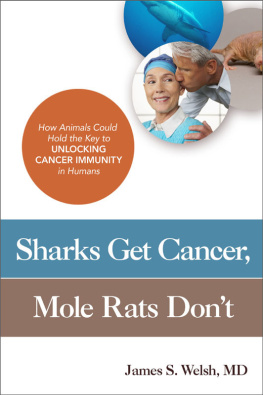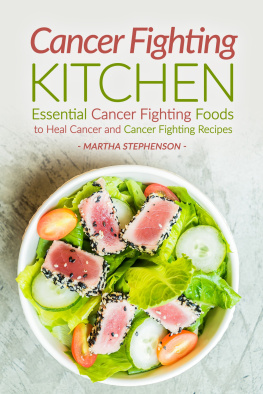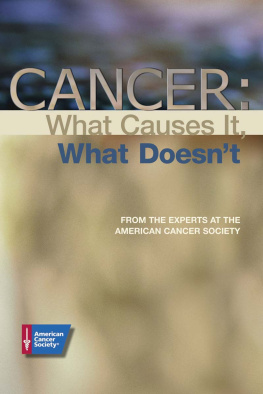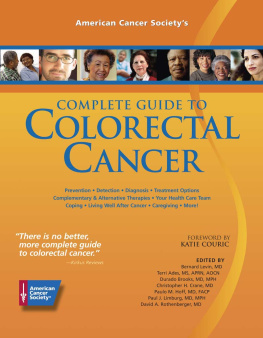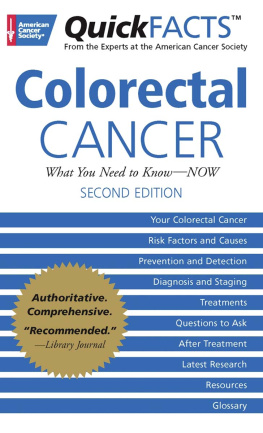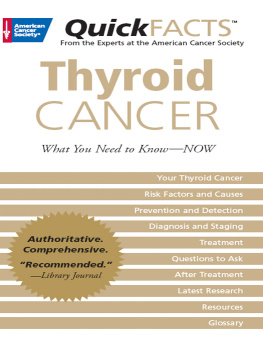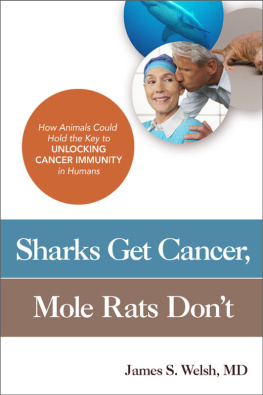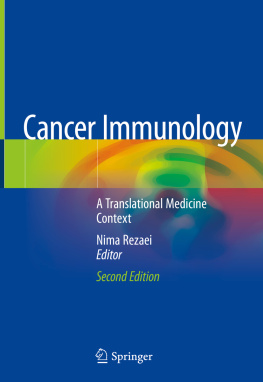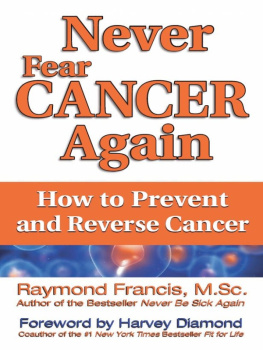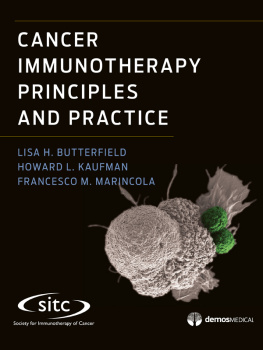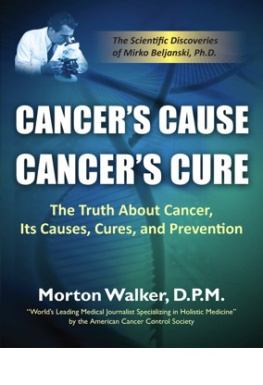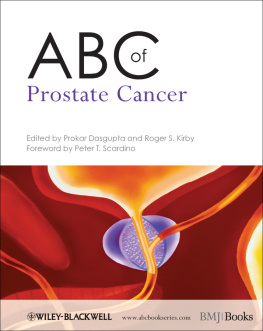
There are far too many to whom I am indebted to list here, and I apologize in advance to all those I have missed.
I would like to begin by expressing my thanks to gifted writer and published author Ron Piana for the many creative conversations and for providing me with the courage to initiate this project.
I am especially indebted to Big Professor Christian Debranin for his extraordinarily sharp clinical and scientific insights along with his numerous stimulating conversations, emails, and thought-provoking questions. I'd like to thank the many friends and colleagues I met through Fermilab, including Alvin Tollestrup, Mark Palmer, Tom Kroc, Mary Anne Cummings, Carol Johnstone, Bruce C. Brown, G. P. Yeh, Fritz DeJongh, and many more who offered ideas and advice along the way.
Particular thanks go to Nobel Laureate Leon Lederman for his encouragement and endorsement of Prometheus Books. Leon (along with Christopher Hill) is coauthor of Beyond the God Particle, which was published in 2013 by Prometheus Books. When others dared not take a chance on an unknown, unpublished author, Prometheus was willing to consider the project, and I am forever in debt to Leon for the introduction. In the same vein, I am most grateful to Steven L. Mitchell for his willingness to consider my manuscript and return my initial call years ago. If not for him, and the voluminous e-mails and telephone conversations along the way, this project would not have ever gotten started, let alone come to fruition.
I'd like to acknowledge the numerous e-mail exchanges with members of SARI (Scientists for Accurate Radiation Information), including but certainly not limited to Rod Adams, Wade Allison, Jerry Cuttler, Mohan Doss, Bob Hargraves, Mark Miller, Noy Rithidech, Bill Sacks, Bobby R. Scott, Jeffry Siegel, and Yehoshua Socol.
Special thanks go to all my colleagues and coworkers in Radiation Oncology at Loyola University Medical Center and the Edward Hines Jr. VA Hospital for putting up with me during this lengthy project. I especially thank my chairman, Dr. William Small, for his extraordinary patience and understanding during this lengthy ordeal. I wish to also express my appreciation to my many friends and colleagues at ACRO, ASTRO, RSNA, ACR, ASCO, and SBMT who provided valuable feedback along the way; especially Drs. A. J. Mundt and Babek Kateb for their ideas, input, and advice on this project.
I wish to also thank my many veterinary colleagues for their patience and kind input including Drs. Lynette Greenwood, Greg Almond, John Hynes, Tom Beckett, and several others.
A very special thank you goes out to Jeff Limmer for all the stimulating and inspiring discussion about the various topics examined in the book. Without his input, I doubt I would have pursued the project. Similarly, I am especially thankful to Rock Mackie for his encouragement and the countless and intellectually stimulating conversations over the years that have provoked the in-depth exploration of much of the material covered in this book. Also, I wish to express my sincere special appreciation to Dr. Steven Finkelstein and Carmen Bigles for their ideas, interest, and support for this project over the years. Another thank you goes to friends and professional colleagues Drs. Eduardo Fernandez, David Gius, Minesh Mehta, Bill Rate, Gayle Woloschak, and Sarah Thurman for putting up with all my blabbering on this subject over the years.
Particular thanks go out to Dr. Arlan L. Rosenbloom, adjunct distinguished service professor emeritus of pediatrics at the University of Florida College of Medicine and world authority on Laron syndrome, for his careful criticism and corrections to a chapter that his own important research figures heavily in. That chapter is now far better and more accurate thanks to his input. I am similarly indebted to Dr. Zeng Cui for his highly appreciated information and feedback on the cancer-resistant mice discussed in one of the chapters in this volume.
I wish to also thank the staff at Wild Life Sydney Zoo in Australia for the valuable information on Tasmanian devils and devil facial tumor disease during my visit.
A unique thank you goes out to the Field Museum in Chicago and the American Museum of Natural History in New York for the excellent collections and information that fostered my imagination and slaked my thirst for knowledge. I actually spent a good deal of time at these marvelous institutions contemplating and constructing the book. Similarly, I should thank NIU physics chairman Larry Lurio for allowing me to teach astrobiology through the Northern Illinois University Honors Program and his department. That experience provided fertile ground for much of the unusual material covered in this present issue.
I also wish to say thank you to my longtime friend and professional colleague Michael Wilburn for the innumerable discussions on molecular biology, biophysics, and immunology dating back to our days at Yale. I would like to also express my appreciation to Stephanie Weiss and Hugh McLaughlin for the countless conversations and sometimes lively debates over the past several years that have substantially remodeled this effort. Ditto for the witty, instructive, and delightful dinnertime repartee with Drs. Manny Suarez and Ed Johnson in St. Vincent, which served as a platform on which to construct much more.
I wish to acknowledge George Johnson, author of The Cancer Chronicles, whose stimulating book and occasional e-mails further inspired me during the creation of this volume.
I am thankful to Said Daibes and many more of my friends and colleagues at the Nuclear Regulatory Commission for the instructive conversations we have had on immunology and nuclear physics.
I would like to thank Tom Donovan for his continued friendship, support, and clarity of ideas. He provided me with the needed perseverance to see this project through.
I thank my patients and the staffs at the various institutions where I have practiced who have asked poignant and thought-provoking questions and taught me to be a better physician. In Wisconsin: Wisconsin Rapids, Wausau, Madison, Marshfield, Antigo, Manitowoc, Freeport, Appleton, Rhinelander; in Shreveport, Louisiana; and in Illinois in Peoria, Pekin, and the greater Chicago area, including the NIU institute for Neutron Therapy at Fermilab. I am also quite grateful to my educators and all the patients I learned from at the Johns Hopkins Hospital in Baltimore where I did my clinical radiation oncology training.
I am extremely grateful to my sister Anna and my brother-in-law Alec for putting up with me, as well as their much needed encouragement, assistance, and constructive criticisms in molding this book from the very start. I am appreciative of all the intelligent input provided by my brother Bill and the careful reviews provided by my sister-in-law Natasha. I wish to express my love and appreciation to my dad (who for the past six years has been responding beautifully to his treatments at Memorial Sloan Kettering Cancer Center) for his review of the manuscript and the numerous corrections he made and to my mom for the encouragement and necessary nourishment during some highly intensive episodes of writing.
I am in deepest debt to my wife, Teri, for the innumerable hours put into this project. In many ways this final book is really her effort. I thank her for the invaluable, insightful, and inspiring input in the creative process, and I am especially appreciative of her intense efforts during the editing process. Without her love and support, this project would never have been completed.

Next page
